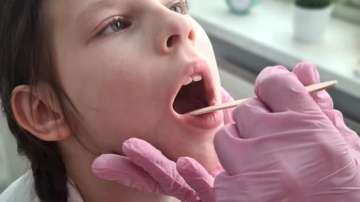Adenoiditis is a health issue that affects children and occurs when the adenoids, which are tissues located behind the nose and above the throat, become inflamed. This inflammation can be caused by various factors, including infections, allergies, or irritation from stomach acid due to laryngopharyngeal reflux (LPR). Typical indications of adenoiditis comprise of snoring, mouth breathing, repetitive ear infections, reduced hearing, issues with breathing, chapped lips, a runny nose, and halitosis.
Who is at risk?
Adenoiditis happens when the adenoids get infected. Adenoids are present in children from the age of 2 and become smaller by the time they turn 8. But if the adenoids stay swollen for a long time, it can cause problems. Children who are bottle-fed, breastfed while lying down, have nose or throat infections, or suffer from allergies are more likely to develop adenoiditis.
Adenoiditis Symptoms
Adenoids are more commonly infected in children because they tend to shrink as they grow up. Some symptoms of adenoiditis include having a stuffy or blocked nose, snoring, difficulty breathing while sleeping, dry mouth, ear pain or infections, swollen neck glands, and hearing problems.
Adenoiditis Diagnosis
To diagnose adenoiditis, your child's doctor will examine their nose, ears, mouth, and throat. This examination may involve the use of a lighted instrument to look inside the nose and throat. The doctor will check for any signs of inflammation, redness, or swelling of the adenoids. They will also look for any other symptoms, such as a runny nose or ear infections.
If the symptoms are severe or do not improve with time, the doctor may recommend an X-ray of the nasal passages and throat. X-ray will show the degree of enlargement of the adenoids and any obstruction of the nasal airway. It can help the doctor to determine the best course of treatment for your child's adenoiditis.
Adenoiditis Treatment
If adenoiditis is not treated, it can lead to various complications. Some of these complications include having a runny nose, recurring ear infections that can lead to decreased hearing, having a dry mouth that can cause dental cavities, speaking with a nasal tone, and developing a condition called "adenoid facies."
Adenoid facies is a condition in children where they have an open-mouthed appearance along with a narrow nose, short upper lip, narrow palate, high palatal vault, and dental crowding.
Usually, adenoids shrink by the time a child reaches the age of 8. However, practicing good hygiene can help prevent repeated infections. If a child has mild symptoms of adenoiditis, supportive treatment is usually enough. However, if the doctor suspects a bacterial infection, the child will need to take antibiotics and use nasal sprays to reduce the size of the adenoids. If the medication doesn't work, the child may need a surgery called adenoidectomy to remove the enlarged adenoids.
